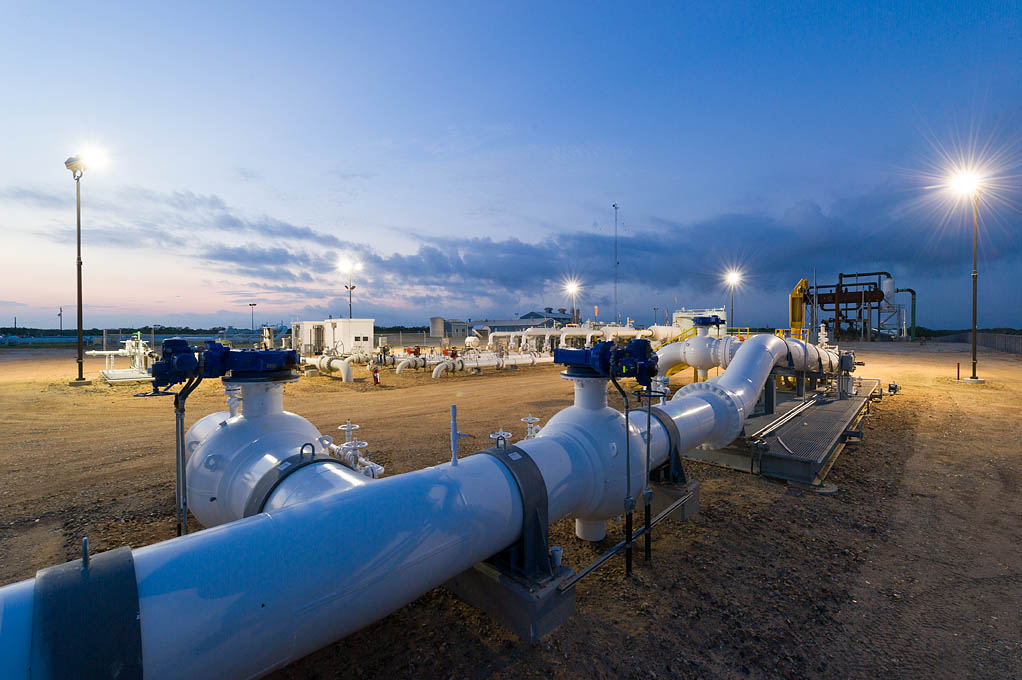The U.S. Energy Information Administration (EIA) reported Thursday morning that U.S. natural gas stocks increased by 91 billion cubic feet for the week ending October 31. That compared with an expected increase of between 75 billion and 90 billion cubic feet anticipated by analysts. The five-year average injection for the week is around 55 billion cubic feet.
Natural gas futures for January delivery were trading down about 0.9% in advance of the EIA’s report, at around $4.25 per million BTUs, and dropped a few more cents immediately following the report. Natural gas futures have risen by about $0.45 per million BTUs since last week.
Stockpiles are about 6.2% below their levels of a year ago and about 6.8% below the five-year average. The U.S. natural gas injection season ended last week, and the EIA had forecast a total inventory on October 31 of 3.53 trillion cubic feet. The actual total of 3.57 trillion cubic feet exceeded both that estimate and the agency’s previous estimate of 3.56 trillion cubic feet, although it is the lowest total since 2008. Last year’s injection season ended with 3.8 trillion cubic feet in inventory.
The weather for the past week remained seasonably mild and that boosted the injection gain. Last week marked the end of 2014 injection season, and it won’t take long for the weather to get colder. Cooler weather is expected in the next few days, and next week’s forecast is for significantly colder weather, especially in the eastern United States.
ALSO READ: 7 Commodities With Collapsing Prices
Additions to storage may continue at reduced levels for a while yet, but demand for natural gas will pick up as winter approaches. By the end of November, we are quite likely to begin seeing withdrawals from storage rising above injections.
The EIA reported that U.S. working stocks of natural gas totaled 3.57 trillion cubic feet, about 261 billion cubic feet below the five-year average of 3.83 trillion cubic feet. Working gas in storage totaled 3.81 trillion cubic feet for the same period a year ago. Natural gas inventories continue to rise, but they remain below the bottom of the five-year range.
Here is how stocks of the largest U.S. natural gas producers reacted to this latest report:
Exxon Mobil Corp. (NYSE: XOM), the country’s largest producer of natural gas, is up about 0.4% at $95.49 in a 52-week range of $86.91 to $104.76.
Chesapeake Energy Corp. (NYSE: CHK) is down about 3.3% at $22.01 in a 52-week range of $16.69 to $29.92.
EOG Resources Inc. (NYSE: EOG) is up about 0.6% at $96.83. The 52-week range is $78.01 to $118.89.
The United States Natural Gas ETF (NYSEMKT: UNG) is down about 1% at $21.75 in a 52-week range of $17.31 to $27.89.
ALSO READ: Crude Oil Price Ignores Saudi Cuts, Rises After Inventory Report
Take Charge of Your Retirement In Just A Few Minutes (Sponsor)
Retirement planning doesn’t have to feel overwhelming. The key is finding expert guidance—and SmartAsset’s simple quiz makes it easier than ever for you to connect with a vetted financial advisor.
Here’s how it works:
- Answer a Few Simple Questions. Tell us a bit about your goals and preferences—it only takes a few minutes!
- Get Matched with Vetted Advisors Our smart tool matches you with up to three pre-screened, vetted advisors who serve your area and are held to a fiduciary standard to act in your best interests. Click here to begin
- Choose Your Fit Review their profiles, schedule an introductory call (or meet in person), and select the advisor who feel is right for you.
Why wait? Start building the retirement you’ve always dreamed of. Click here to get started today!
Thank you for reading! Have some feedback for us?
Contact the 24/7 Wall St. editorial team.




